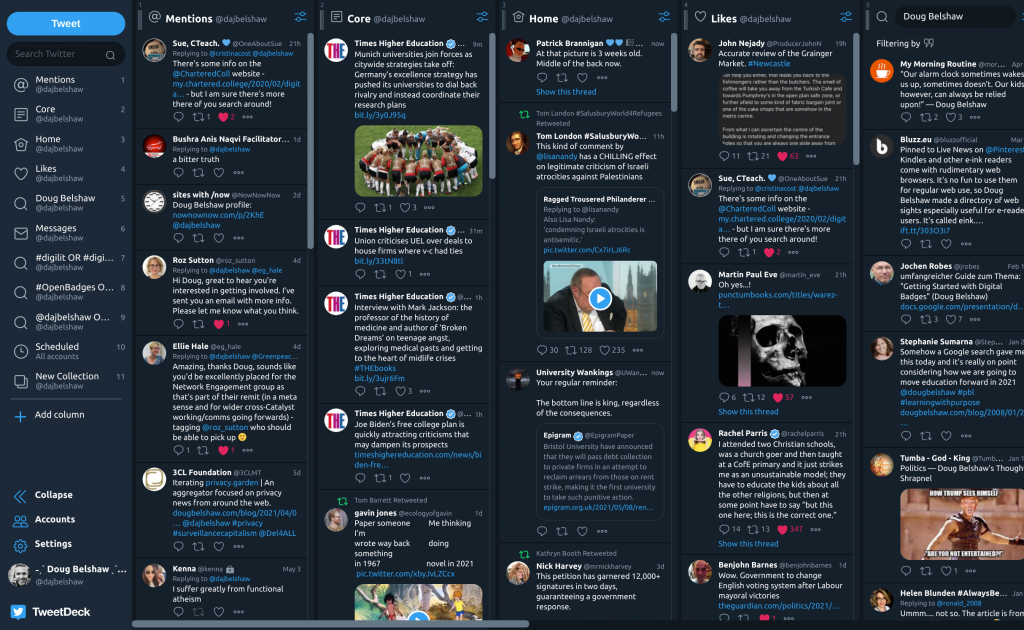Unauditible algorithms are the enemy of social media users

Writing about Elon Musk trying to buy Twitter, Dorian Taylor reflects that:
What Twitter does really well is put you on equal footing with people you would otherwise never think to reach out to, and in other contexts, probably wouldn’t give you the time of day. These people put themselves out there to be interacted with, so you have implicit permission to interact with them.
I would say Twitter perhaps used to do this, at least for me. I find these kinds of interaction these days on the Fediverse, where people aren’t trying to please algorithms.
Chris Trottier, someone I have recently started following, wrote a post explaining the difference between interacting in a centralised, algorithm-controlled space, and setting up shop in a decentralised one.
I have managed to attract 35 followers. This is for a fresh new instance barely two weeks old. The network effect is low. There’s no social algorithm pushing my posts because the Fediverse has no algorithms like that.
Likewise, I am nobody particularly notable – just a guy having fun on social media. All anyone sees is pictures of computer games, cassette tapes, food, and stuff from nature walks. In effect, just stuff a typical person would share.
People respond to incentives: if algorithms are set up to reward users who interact in a certain way, then this is what (most) users end up doing. Proof of this comes through behaviours such as like-farming declarative statements on centralised social media, designed to maximise ‘engagement’ with a post.
It’s not so radical to wonder whether, when users of a system are posting things with the intention of ‘going viral’, perhaps authenticity suffers? Are algorithms used by centralised social media serving the needs of the humans using it?
Algorithms that cannot be audited are a feature, not a bug, of centralised social media. They are what provide ‘shareholder value” by allowing advertising content to grab the attention of users, whether they like it or not. These systems are focused on behaviour modification and are not going to change.
Capital, which is what centralised social media serves, loves hierarchy and social stratification. People knowing their place. People having a different experience based on their ability to pay, and, of course, monetising the ‘follower’ dynamic.
The Fediverse is a messy, weird, human place. It reminds me of Twitter in the early days. Everyone on a truly equal footing, being themselves — whatever that happens to be today. The experience isn’t sanitised, or corporate, or algorithmic. And, for me that’s perfect.





